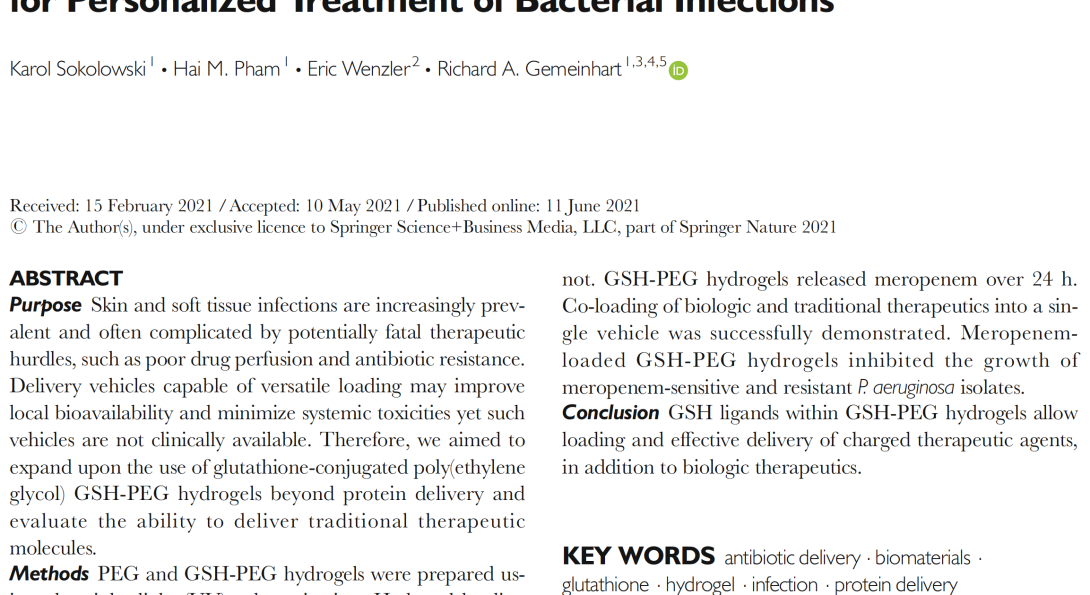Karol Publishes First Authored Paper

Tite:
ABSTRACT:
Purpose Skin and soft tissue infections are increasingly prevalent and often complicated by potentially fatal therapeutic hurdles, such as poor drug perfusion and antibiotic resistance. Delivery vehicles capable of versatile loading may improve local bioavailability and minimize systemic toxicities yet such vehicles are not clinically available. Therefore, we aimed to expand upon the use of glutathione-conjugated poly(ethylene glycol) GSH-PEG hydrogels beyond protein delivery and evaluate the ability to deliver traditional therapeutic molecules. Methods PEG and GSH-PEG hydrogels were prepared using ultraviolet light (UV)-polymerization. Hydrogel loading and release of selected drug candidates was examined using UV-visible spectrometry. Therapeutic molecules and GST fusion protein loading was examined using UV-visible and fluorescent spectrometry. Efficacy of released meropenem was assessed against meropenem-sensitive and -resistant P. aeruginosa in an agar diffusion bioassay. Results For all tested agents, GSH-PEG hydrogels demonstrated time-dependent loading whereas PEG hydrogels did not. GSH-PEG hydrogels released meropenem over 24 h. Co-loading of biologic and traditional therapeutics into a single vehicle was successfully demonstrated. Meropenem loaded GSH-PEG hydrogels inhibited the growth of meropenem-sensitive and resistant P. aeruginosa isolates. Conclusion GSH ligands within GSH-PEG hydrogels allow loading and effective delivery of charged therapeutic agents, in addition to biologic therapeutics.
KEYWORDS: antibiotic delivery, biomaterials, glutathione, hydrogel, infection, protein delivery